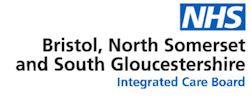

The Early Years Speech and Language Therapy service offers support for families of children aged 0-4 years (up to preschool age), across Bristol, North Somerset and South Gloucestershire (BNSSG).
They provide an assessment, diagnosis and intervention service to children and young people with speech, language and communication needs and/or with eating, drinking and swallowing difficulties.
The School Age Speech and Language Therapy service offers support with speech, language, communication, feeding and swallowing for children and young people aged 4 years to 19 years who are in full time education or are being educated out of school.
Services are open to children and young people who have a GP and live within the BNSSG area.
The Speech and Language Therapy Service supports children and young people with:
Families can access telephone advice, school and nursery drop-in clinics, parent information sessions and online support in advance of an assessment.
If a full assessment is also required, the child or young person will then be referred to the team after receiving this initial support.
Health Professional Referral - To make a referral, please check the referral criteria on the team's making a referral page and if you feel the child meets the level of need required, complete the Single Point of Entry form (also available as an EMIS template). Single Point of Entry Form and Supporting Questionnaires can be found here.
Self-Referral - Parents are also able to self refer directly to the service if they complete the relevant age-related questionnaire and single point of entry form available on the Making a referral – Children and Young People’s Services page.
Some children and young people may require more specialist support from the service. Where possible, encourage schools to refer into the service through discussion with their Link speech and language therapist. This enables all the relevant information to be collected prior to a referral making it more likely to be accepted.
Where this is not possible, schools, families and professionals can refer directly into the service.
To make a referral the following is required;
Language concerns : We would encourage schools to purchase and use the Speech and Language UK Progression Tool to use as a screener for language.
Where this is not possible, please use the Sirona screeners below:
Language concerns:
Speech sound concerns:
Please also write about the impact that this has on daily functioning and why referral now is needed.
Efforts are made to ensure the accuracy and agreement of these guidelines, including any content uploaded, referred to or linked to from the system. However, BNSSG ICB cannot guarantee this. This guidance does not override the individual responsibility of healthcare professionals to make decisions appropriate to the circumstances of the individual patient, in consultation with the patient and/or guardian or carer, in accordance with the mental capacity act, and informed by the summary of product characteristics of any drugs they are considering. Practitioners are required to perform their duties in accordance with the law and their regulators and nothing in this guidance should be interpreted in a way that would be inconsistent with compliance with those duties.
Information provided through Remedy is continually updated so please be aware any printed copies may quickly become out of date.